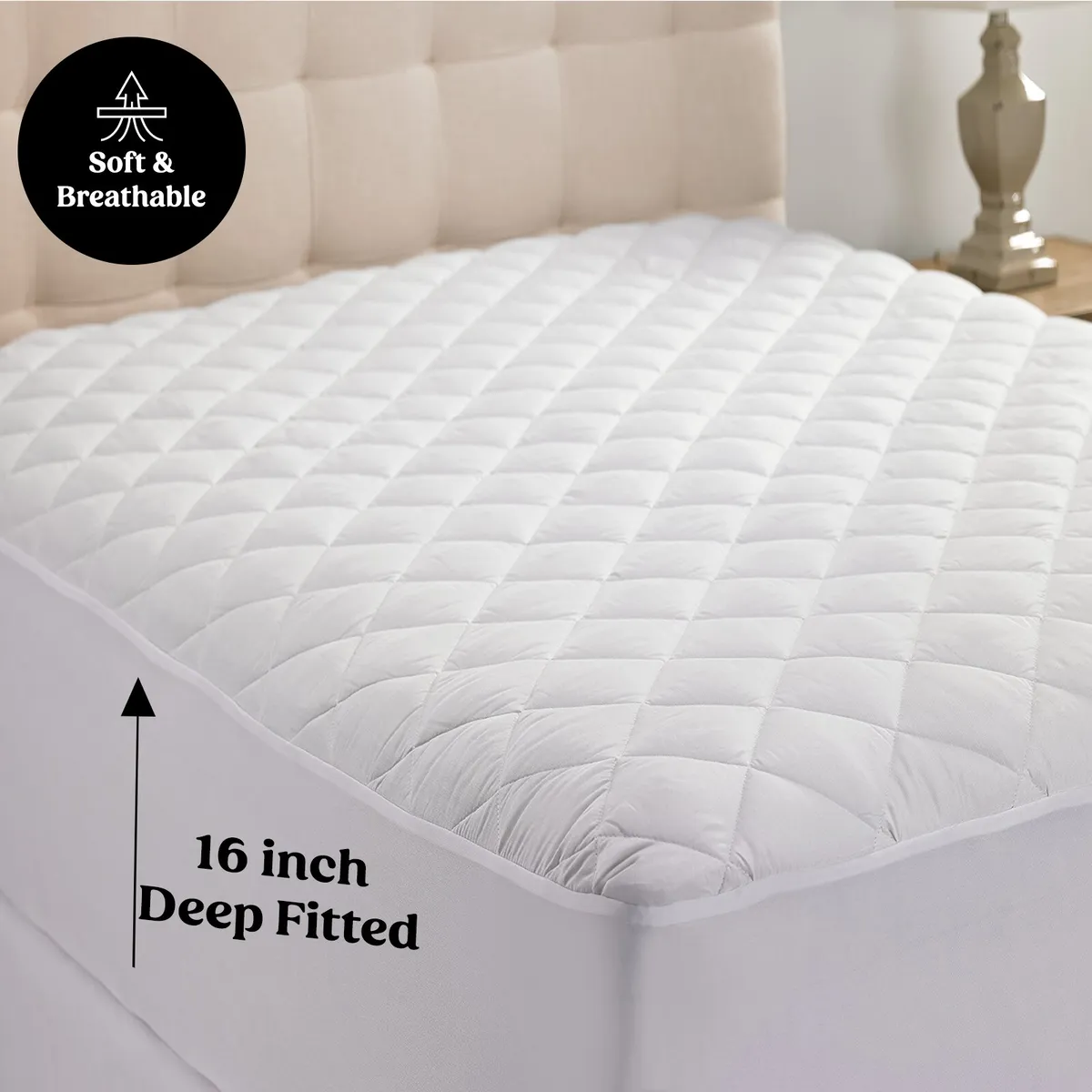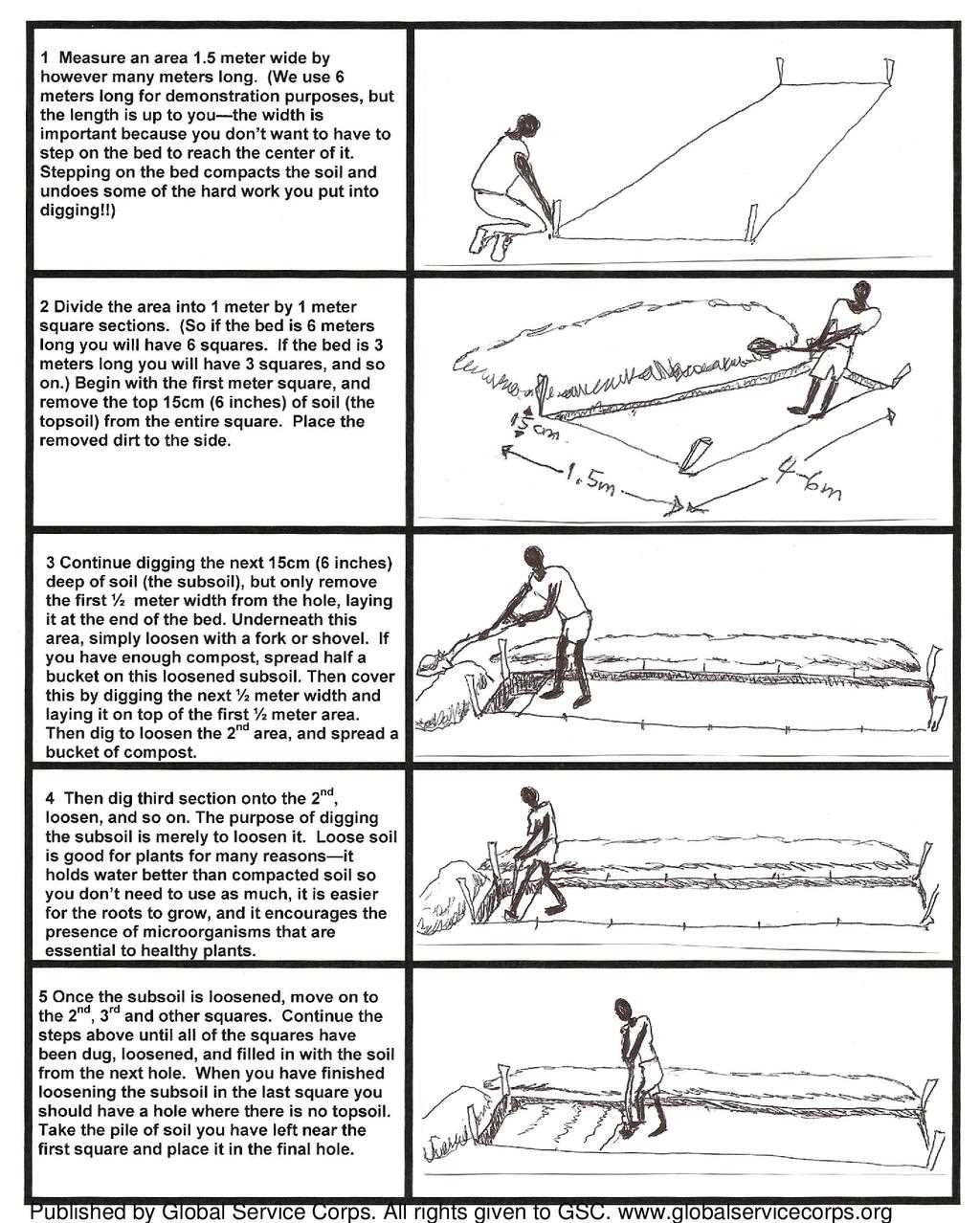- Overview of Deep Bed
- Uses of Deep Bed
- 1. Water Treatment
- 2. Air Filtration
- 3. Industrial Processes
- 4. Aquarium Filtration
- 5. Pools and Spa Filtration
- 6. Drinking Water Purification
- 7. Bioreactors
- 8. Aquaponics and Hydroponics
- 9. Groundwater Remediation
- 10. Laboratory Research
- Suitable Regions for Deep Bed
- Advantages of Deep Bed
- 1. Enhanced Nutrient Retention
- 2. Improved Water Retention
- 3. Enhanced Root Development
- 4. Increased Plant Diversity
- 5. Longer Plant Lifespan
- Disadvantages of Deep Bed
- Factors to Consider for Deep Bed Installation
- 1. Soil Composition
- 2. Drainage Systems
- 3. Water Source
- 4. Sunlight Exposure
- 5. Microclimate Conditions
- 6. Local Regulations and Restrictions
- 7. Maintenance Requirements
- 8. Accessibility
- 9. Budget
- 10. Local Expertise or Advice
- “Question-Answer”
- What is a deep bed?
- What are the uses of a deep bed?
- How does a deep bed filtration system work?
- What are the benefits of using a deep bed filtration system?
- What regions are suitable for using deep bed filtration systems?
- Can a deep bed filtration system be used for both water and air filtration?
- “Video” Are Wider Beds Better?
In the field of agriculture, deep bed cultivation has gained popularity due to its numerous advantages and benefits. Deep bed refers to a method of growing crops where the soil is tilled and prepared to a significant depth, typically more than eighteen inches. This technique is particularly useful in regions with limited arable land or where the soil quality is poor. Deep bed cultivation allows for improved water drainage and retention, better nutrient absorption, and enhanced root development.
One of the main advantages of deep bed cultivation is its ability to improve soil structure. By loosening and aerating the soil at a significant depth, the roots of the plants can penetrate more easily, resulting in stronger and healthier plants. Additionally, deep beds allow for better water drainage, preventing waterlogging and root rot. This is especially important in regions with heavy rainfall or poor soil drainage.
Deep bed cultivation is also beneficial for regions with limited arable land. By cultivating deep beds, farmers can maximize their use of available land and produce higher yields per square foot. This is particularly advantageous in urban areas or densely populated regions where land is scarce and expensive. Deep bed cultivation techniques such as raised beds or vertical gardening can be implemented to optimize space utilization and increase productivity.
“Deep bed cultivation allows farmers to optimize the use of limited land and maximize crop yields, making it an ideal technique for regions with limited agricultural resources.”
It is important to note that deep bed cultivation may not be suitable for all regions. In areas with naturally fertile soil and adequate rainfall, traditional farming methods may be more appropriate. It is crucial to consider the specific soil, climate, and resources available in each region to determine the most suitable cultivation technique. However, in regions where soil quality is poor, water resources are limited, or land is limited, deep bed cultivation can offer a viable solution for sustainable agriculture.
Overview of Deep Bed
A deep bed is a type of agricultural practice used to enhance the productivity and sustainability of crop production. It involves the creation of a deep layer of organic matter that provides a rich and fertile environment for plant growth. Deep bed systems are commonly used in regions with limited access to water and/or poor soil quality, as it helps improve water retention and nutrient availability.
Benefits of Deep Bed:
- Improved water retention: The deep layer of organic matter in a deep bed system helps to retain water, reducing the need for frequent irrigation.
- Enhanced nutrient availability: The organic matter in the deep bed allows for increased nutrient availability to plants, promoting healthier growth.
- Reduction in soil erosion: The deep bed helps to prevent soil erosion, as the organic matter acts as a protective cover.
- Increased soil fertility: The addition of organic matter to the deep bed enriches the soil, providing essential nutrients for plant growth.
- Improved crop yields: Deep bed systems have been shown to increase crop yields, as the plants have access to a more favorable growing environment.
- Environmentally friendly: Deep bed systems promote sustainable agriculture by reducing the need for chemical inputs and helping to restore degraded soils.
Suitable Regions for Deep Bed:
Deep bed systems are most suitable for regions with the following characteristics:
- Low rainfall or limited access to water resources
- Poor soil quality or degraded soil
- Hot and arid climate conditions
- Remote or isolated locations
- Limited access to chemical fertilizers and pesticides
- Desire to practice sustainable and organic farming
Overall, deep bed systems offer a promising solution for farmers in regions facing water scarcity, poor soil quality, and other agricultural challenges. By implementing deep bed practices, farmers can improve the productivity and sustainability of their crops, leading to higher yields and better livelihoods.
Uses of Deep Bed
Deep bed systems are commonly used in various industries and applications. Here are some of the main uses of deep bed:
1. Water Treatment
Deep bed filtration is widely used in water treatment plants for the removal of suspended solids, turbidity, and various contaminants. The deep bed media, such as sand or activated carbon, acts as a filter to trap particles and purify the water. This method is effective in removing impurities and improving water quality.
2. Air Filtration
Deep bed filters are also used for air filtration in industries where air quality is crucial, such as pharmaceutical manufacturing, electronics production, and cleanrooms. The deep bed media, such as activated carbon or HEPA filters, captures airborne particles, odors, and contaminants, ensuring clean and safe air for workers and equipment.
3. Industrial Processes
Deep bed systems are utilized in various industrial processes that require the removal of particulate matter or contaminants from liquids or gases. This includes oil and gas refining, chemical manufacturing, food processing, and wastewater treatment. Deep bed filtration helps improve product quality, protect equipment, and ensure compliance with environmental regulations.
4. Aquarium Filtration
Deep bed filters are commonly used in aquariums and fish tanks to maintain water quality and provide a healthy environment for aquatic life. The deep bed media, such as biological filter media or activated carbon, helps remove ammonia, nitrites, nitrates, and other harmful substances. This ensures a stable and balanced ecosystem for the fish, plants, and other aquatic organisms.
5. Pools and Spa Filtration
Deep bed filters are used in swimming pools and spas to remove debris, dirt, and impurities from the water. The deep bed media, such as sand or diatomaceous earth, acts as a filter to trap particles and contaminants. This helps keep the water clean, clear, and safe for swimmers.
6. Drinking Water Purification

Deep bed filtration is also employed in the purification of drinking water at a household or small-scale level. The deep bed media, such as activated carbon or ceramic filters, helps remove chlorine, sediment, bad taste, and odor from tap water. This improves the taste and quality of drinking water and ensures the removal of potential health hazards.
7. Bioreactors
Deep bed systems are used in bioreactors for the purification of air or water through microbial processes. The deep bed media, such as microbial biomass or biofilm, serves as a substrate for the growth of microorganisms that help degrade pollutants or convert harmful substances into harmless compounds. This technology is used in wastewater treatment, biogas production, and other environmental applications.
8. Aquaponics and Hydroponics
Deep bed filtration is employed in aquaponics and hydroponics systems for the purification of water and removal of solid waste. The deep bed media, such as gravel or expanded clay pellets, helps provide a substrate for the growth of beneficial bacteria and roots of plants. This allows for the cultivation of plants without soil and the integration with fish or aquatic organisms in a recirculating system.
9. Groundwater Remediation
Deep bed systems are used in groundwater remediation to remove contaminants and pollutants from underground water sources. The deep bed media, such as activated carbon or ion-exchange resins, helps adsorb or exchange harmful substances, improving the quality of groundwater. This technology is used in the cleanup of contaminated sites and the protection of drinking water sources.
10. Laboratory Research

Deep bed systems are used in laboratory research for the separation, purification, and analysis of substances. The deep bed media, such as chromatography resins or adsorbents, helps isolate and concentrate specific compounds or molecules. This is important in various scientific fields, including chemistry, biochemistry, pharmaceutical development, and environmental analysis.
In conclusion, deep bed systems have a wide range of uses in different industries and applications. From water and air filtration to industrial processes and laboratory research, deep bed technology plays a crucial role in improving quality, protecting the environment, and ensuring the safety of various systems and processes.
Suitable Regions for Deep Bed
The use of deep bed systems for wastewater treatment is suitable for various regions, depending on factors such as climate, land availability, and proximity to water sources. Here are some suitable regions for deep bed systems:
- Rural Areas: Deep bed systems are particularly well-suited for rural areas where there is ample land available for installation. These systems can effectively treat wastewater from small communities, farms, and remote locations.
- Coastal Areas: Deep bed systems can be implemented in coastal regions due to their ability to handle high levels of saltwater intrusion. This is especially important in areas where the groundwater is saline or prone to contamination from seawater.
- Arid and Semi-Arid Regions: Deep bed systems can be beneficial in arid and semi-arid regions where water resources are scarce. These systems can help in reusing and recycling water, reducing the strain on existing water sources.
- Developing Countries: Deep bed systems can be suitable for developing countries that lack extensive infrastructure for wastewater treatment. These systems provide a cost-effective solution for treating wastewater in areas where traditional treatment plants may not be feasible.
- Urban Areas with Limited Space: Although deep bed systems require more land compared to other treatment methods like activated sludge systems, they can still be implemented in urban areas with limited space. Deep bed systems can be designed to have a smaller footprint and can be installed underground to save space.
It is important to consider the specific requirements and conditions of each region when implementing deep bed systems. Factors such as soil characteristics, groundwater levels, and local regulations should be taken into account to ensure the successful operation of the deep bed system.
Advantages of Deep Bed
1. Enhanced Nutrient Retention
A deep bed system provides a larger volume of substrate for plant roots to grow and establish themselves. This allows for greater nutrient uptake and retention, resulting in healthier and more productive plants. The increased nutrient retention in a deep bed system also minimizes the need for frequent fertilization, making it a more sustainable and cost-effective option.
2. Improved Water Retention
The deeper substrate in a deep bed system has a higher water-holding capacity compared to shallow beds. This means that plants have access to a more consistent and reliable water supply, reducing the risk of drought stress and promoting optimal growth. The improved water retention also allows for longer periods between irrigation, saving water and reducing the need for frequent watering.
3. Enhanced Root Development
The deep bed system encourages plants to develop a stronger and more extensive root system. This is because the plants are provided with a larger area to explore and access nutrients and water. The deeper roots help anchor the plants in the substrate, increasing stability and resilience to environmental stresses such as strong winds or heavy rainfall. The enhanced root development also improves nutrient and water uptake efficiency.
4. Increased Plant Diversity
Deep bed systems provide more space and resources for a wider variety of plant species to thrive. The larger substrate volume allows different plants with varying root depths to coexist in the same system. This diversity can enhance the aesthetic appeal of the garden or landscape and promote ecological balance by attracting a broader range of beneficial organisms such as pollinators and soil microorganisms.
5. Longer Plant Lifespan
Due to the greater nutrient and water availability, as well as the improved root development, plants grown in deep beds have a longer lifespan compared to those in shallow beds. The healthier and more robust root systems enable plants to withstand environmental challenges and exhibit greater tolerance to diseases and pests. This means less replanting and maintenance, leading to time and cost savings in the long run.
| Advantages | Description |
|---|---|
| Enhanced Nutrient Retention | Greater nutrient uptake and less frequent fertilization |
| Improved Water Retention | More consistent water supply and less frequent watering |
| Enhanced Root Development | Stronger and more extensive root system |
| Increased Plant Diversity | Ability to support a wide range of plant species |
| Longer Plant Lifespan | Greater resilience and tolerance to environmental challenges |
Disadvantages of Deep Bed

- High construction cost: Building and setting up a deep bed system can be costly due to the materials required and the amount of labor involved. The excavation and construction of large trenches or basins for the deep bed can be expensive.
- Space requirements: Deep bed systems require a larger area compared to other wastewater treatment methods. This can be a challenge in urban areas where space is limited and valuable.
- Longer startup time: Deep bed systems typically require a longer startup time for the microbial community to establish and for the bed to reach optimal performance. This can result in a delay before the system is fully functional.
- Higher maintenance requirements: Deep bed systems require regular monitoring and maintenance to ensure proper functioning. This includes periodic removal of accumulated sludge and regular testing of influent and effluent quality.
- Potential odor issues: If not properly managed, deep bed systems can produce unpleasant odors due to the breakdown of organic matter. This can be a concern, especially if the system is located near residential areas or public spaces.
- Potential leakage: Deep bed systems can experience leakage issues if not properly designed and constructed. This can result in the contamination of groundwater or surrounding soil, posing environmental risks.
Despite these disadvantages, deep bed systems have proven to be an effective and reliable method for treating wastewater in suitable regions. With proper design, construction, and maintenance, these challenges can be mitigated, and the benefits of deep bed systems can be realized.
Factors to Consider for Deep Bed Installation
Installing a deep bed requires careful planning and consideration of several factors. Here are some key aspects to keep in mind:
1. Soil Composition

The composition of the soil in the installation area plays a crucial role in determining the success of a deep bed. It is important to assess the soil’s ability to retain water, drain excess moisture, and provide adequate nutrients to plants. Conducting a soil test can help determine the suitability of the site for a deep bed installation.
2. Drainage Systems
Proper drainage is essential to prevent waterlogging in deep beds. Installing a well-designed drainage system that effectively removes excess water and prevents water stagnation is crucial. This can include the use of drain tiles, perforated pipes, or gravel-filled trenches to ensure adequate drainage.
3. Water Source
Deep beds require a reliable water source for irrigation. Consider the proximity of a water source and the availability of water in the installation area. In regions with limited water resources, alternative water harvesting or irrigation methods may need to be employed.
4. Sunlight Exposure

Most plants require a certain amount of sunlight to thrive. Assess the sunlight exposure in the proposed deep bed installation area to ensure that plants receive the necessary amount of sunlight. Consider factors such as shade from nearby structures or trees that may affect sunlight availability.
5. Microclimate Conditions
Microclimate refers to the climate conditions specific to a particular area, such as temperature, humidity, and wind patterns. Understanding the microclimate of the installation area can help determine the types of plants that can thrive in the deep bed and inform decisions such as the need for additional protection or insulation.
6. Local Regulations and Restrictions
Before installing a deep bed, it is important to check local regulations and restrictions that may apply. Some areas may have specific guidelines or permits required for deep bed installations, especially in residential or urban settings. Compliance with these regulations is essential to avoid any legal issues.
7. Maintenance Requirements
Deep beds, like any other gardening or landscaping feature, require regular maintenance. Consider the time and effort required for maintaining the deep bed, including watering, weeding, and pest control. Assess whether you have the resources and willingness to commit to the necessary maintenance tasks.
8. Accessibility

Consider the accessibility of the deep bed installation area. Will it be easy to reach the deep bed for maintenance tasks, such as harvesting, pruning, or replanting? Ensure that the installation area is conveniently accessible to avoid any difficulties in caring for the deep bed.
9. Budget
The installation of deep beds may involve expenses such as materials, tools, and labor. Consider your budget and allocate funds accordingly. It may be helpful to research and compare prices for different materials or consider DIY options to minimize costs.
10. Local Expertise or Advice
Consulting local gardening experts, horticulturists, or landscapers can provide valuable insights and guidance specific to your region. They can help you assess the suitability of the installation area for deep bed cultivation and provide recommendations for plant selection, soil amendments, and maintenance practices.
By considering these factors, you can ensure a successful deep bed installation that will provide an ideal environment for plant growth and maximize the benefits this gardening technique offers.
“Question-Answer”
What is a deep bed?
A deep bed is a type of filtration system that uses a thick layer of filter media to remove particles and impurities from water or air.
What are the uses of a deep bed?
A deep bed is commonly used in water treatment plants, wastewater treatment plants, and industrial processes to remove suspended solids, organic matter, and other impurities from water or air.
How does a deep bed filtration system work?
A deep bed filtration system works by passing water or air through a thick layer of filter media, such as sand, gravel, or activated carbon. The filter media traps and retains particles and impurities, allowing clean water or air to pass through.
What are the benefits of using a deep bed filtration system?
Some of the benefits of using a deep bed filtration system include high filtration efficiency, large filtering capacity, and the ability to remove a wide range of impurities. Additionally, deep bed filtration systems can be easily operated and maintained.
What regions are suitable for using deep bed filtration systems?
Deep bed filtration systems can be used in a wide range of regions and environments. They are particularly suitable for areas with high levels of suspended solids, organic matter, or other impurities in water or air.
Can a deep bed filtration system be used for both water and air filtration?
Yes, a deep bed filtration system can be used for both water and air filtration. The same principles and techniques can be applied to remove impurities from both water and air.







